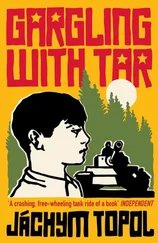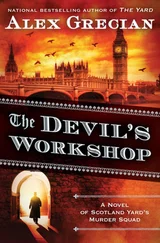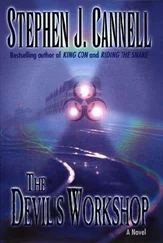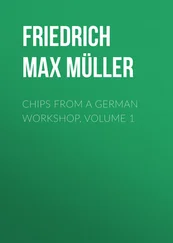Outside the purga rages.
We go on sleeping.
I poke my head out and there’s no more wind and rain, no more howling. And underneath a magnificent, radiant sun the machines are heading towards us over the frozen snow-white plain. The president’s bulldozers are as colourful as Ula’s boxes, yep, the same machines that crushed the walls in Terezín. We pick ourselves up and walk down to meet them. With Ula I can easily handle the plain.
It was only a dream. Her crying wakes me. The wind, coming through the gorge now, rattles the tent canvas. Ula’s crouched in the corner, I lie down beside her.
A day or two later we try to go out but only make it a couple steps. Even holding each other up, we can’t make any headway against the wind. We have to turn back. We’re also weak with hunger. I’ve only got a few blues left.
We snuggle up in the blankets. Squeezed together. Trying to keep each other warm. Maybe the reason we’re so cold is that we’re hungry. At night I get the feeling that Ula’s melting. Fading away. So I hold her tight.
We go on sleeping.
I wake up and something’s different. I shake my head. Uh-huh. It’s quiet outside. I stick my head out. Sun. Wriggle out of my sleeping bag, crawl outside.
Lots of trees are gone. Where there used to be the green of the treetops, now you can see the plain.
The sun is climbing higher. You can walk pretty well on the frozen snow.
Ula crouches at the entrance to the tent. Watching. The silence is magnificent.
We’ll definitely go. We’ll make it somewhere. Save ourselves. Yeah, it might work out.
AUTHOR’S ACKNOWLEDGEMENTS
Thanks
To Jaroslav Formánek and Anneke Hudalla, who sent me on my first reporting trip to Terezín. To Jan Horníček, the town mayor, and Vojtěch Blodig, historian of the Ghetto Museum, for their time and patience, with apologies for my failure to write about demons realistically. To Edgar de Bruin, who was part of this story from the beginning, for his enthusiasm and advice. To Dora Kaprálová, without whose encouragement and ideas I would probably never have written this book. To Adéla Kovácsová for the first and Zuzana Jürgens for the last careful and critical reading. To Tereza Říčanová for The Book of Goats. To Stephan Krull for inspiring conversations. To Míša Stoilová for orientation in the language of our friends. And to Sjarhej, Arina, and Maryjka, who showed me where the devil had his workshop.
Notes
The author of the poem ‘Kill the President,’ on page 90, is Slavomir Adamovich. The villagers’ testimonies, on pages 127 and 128, come from a collection documenting the Ostplan massacres, compiled by Ales Adamovich, Yanka Bryl, and Vladimir Kolesnik, Ya iz ognennoy derevni … (Minsk: Mastackaja litaratura, 1975); Czech translation, Václav Židlický, Moje ves lehla popelem … (Prague: Naše vojsko, 1981).
Jáchym Topol
Berlin, DAAD, 2009
The horrors of history are familiar ground for Jáchym Topol. His first novel, Sestra, translated into English as City Sister Silver in 2000, contained a full, grim chapter dedicated to Auschwitz, and numerous references to the butchering of indigenous people in the United States. In this novel, his fifth, Topol revisits the Holocaust — albeit by way of its present-day echoes — setting the first half of The Devil’s Workshop in Terezín, an eighteenth-century fortress town north of Prague that the Gestapo used as a prison and ghetto for Jews in the Second World War. But in the novel’s second half, which takes place mostly in Minsk, the capital of Belarus, and Khatyn, a village on its outskirts, he turns to a little-known chapter in the annals of atrocity.
Readers of this book are likely aware, more or less, of the basic facts of the genocide of European Jews in the Second World War. Yet the mass killings of non-Jewish Belarusians during the same period have only recently been dragged out of the shadows, thanks to US historian Timothy Snyder’s tour de force of 2010, Bloodlands: Europe Between Hitler and Stalin. So even though The Devil’s Workshop is a work of fiction, readers should know that on 22 March 1943, the 118th Schutzmannschaft auxiliary police battalion (made up largely of Ukrainian collaborators, deserters, and prisoners of war) and the Waffen-SS special battalion led by the notorious Oskar Dirlewanger murdered the inhabitants of Khatyn — 149 Belarusian children, women, and men — and this is a fact. As Snyder wrote in Bloodlands : ‘Dirlewanger’s preferred method was to herd the local population inside a barn, set the barn on fire, and then shoot with machine guns anyone who tried to escape.’ This is the method he used in Khatyn and it is described in Topol’s book by one of the story’s fictional characters.
Those who keep up on world news will know that Belarus is commonly described nowadays as Europe’s last dictatorship, another reality reflected in The Devil’s Workshop. One example of this is the scene in Minsk where the Belarusian President appears on TV and declares martial law. This does not depict an actual event, but the words Topol puts in the mouth of the President are based on the text of a controversial and disputed interview with Alexander Lukashenko from 1995.
This mixing, and blurring, of fact and fiction is one of Topol’s favoured techniques, though, as I learned when I was translating City Sister Silver, the more blood-chilling the anecdote, the more likely it is to be true. As I wrote in my preface to that book, unearthing the sources Topol drew on was a major part of my work on his first novel. With The Devil’s Workshop he took a different approach, including acknowledgements that cite, among other things, the source of the stories told by the macabre talking corpses in Alex’s museum: they are taken directly from the testimony of Belarusians who survived atrocities similar to the ones in Khatyn.
A more personal note on the interplay between fact and fiction: one of the events that happened in my own backyard while I was translating this novel was the birth of the Occupy movement. Hearing the participants and sympathetic observers comparing it to the Arab Spring, which in turn had been compared to the Velvet Revolution of November 1989, I couldn’t help seeing some kinship between the people occupying Zuccotti Park and, in Topol’s novel, the bunk seekers who ‘occupied’ Terezín, and the protesters with their tents on the square in Minsk. Before I ever met Topol, as a graduate student in 1990, I had read about him — not only because of his poetry but also because of his work as a human-rights activist. As a reporter for a samizdat newspaper, Topol was intimately involved in the downfall of communism in Czechoslovakia. This was on my mind in mid November 2011, when the New York Police Department violently dismantled the Occupy encampment in Zuccotti Park. There is always a continuity, of varying visibility, that sneaks from the past into literature, into the present, and back again, and I was acutely conscious of it while working on this translation.
Finally, a few words about the title: Topol’s original name for the book was Ďáblova dílna (‘The Devil’s Workshop’). Shortly before its publication in Czech, however, a German film was released called Die Fälscher (‘The Counterfeiters’), which in the Czech Republic was retitled Ďáblova dílna, so in order to avoid confusion Topol and his publisher decided to call this novel Chladnou zemí (‘Through a Cold Land’ — another phrase that appears in the book). A Czech friend of mine, pointing out the cold/hot dichotomy between the two titles, told me she preferred the newer one, since it better corresponded to the novel’s chilly mood and atmosphere. I agreed with her but still felt that ‘Through a Cold Land’ (or simply ‘A Cold Land’), if less of a cliché, was also less evocative, and seeing that most translators of the novel into other languages had opted for Topol’s original title, I decided to do the same.
Читать дальше












